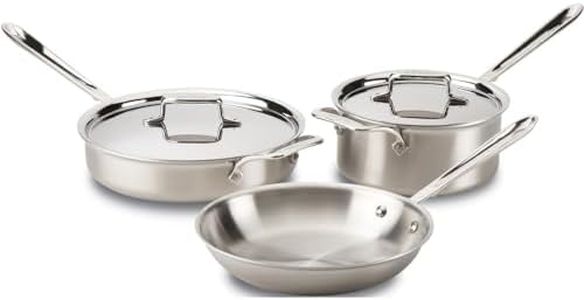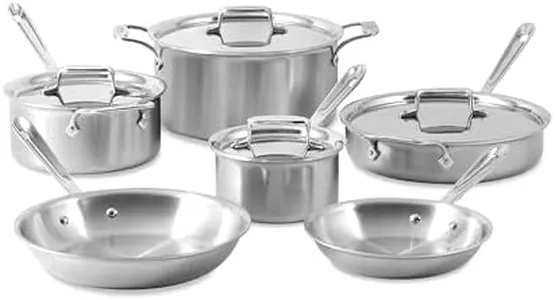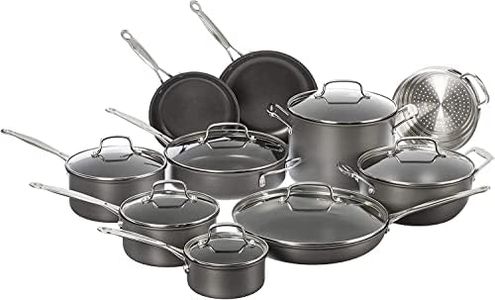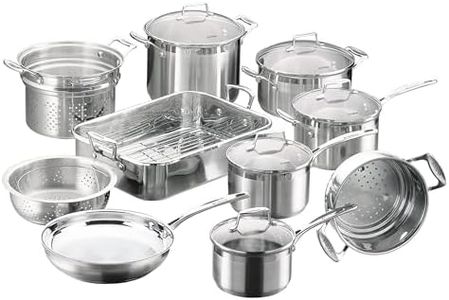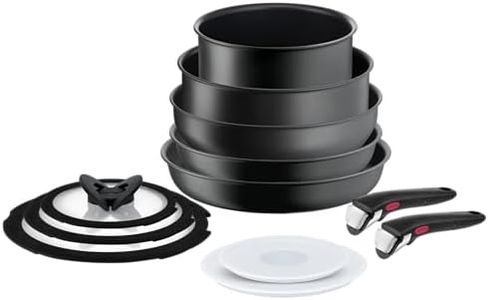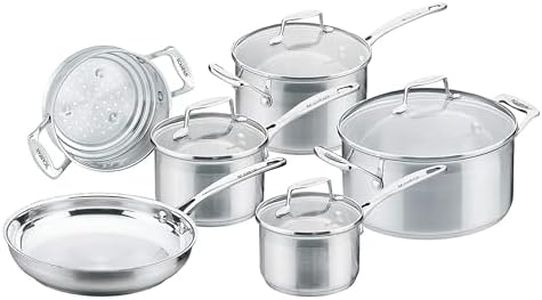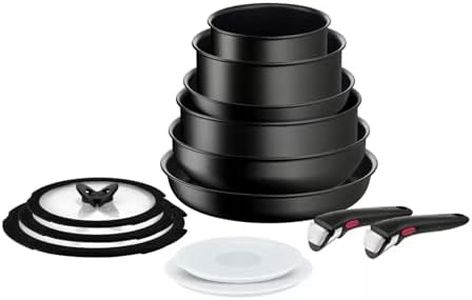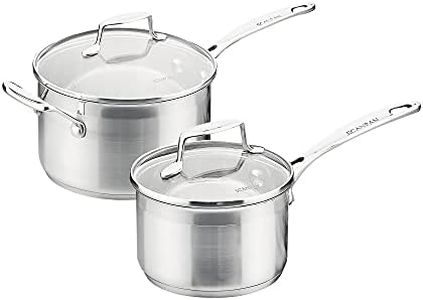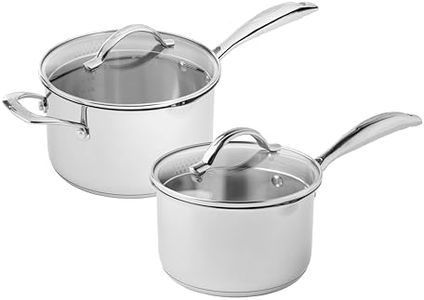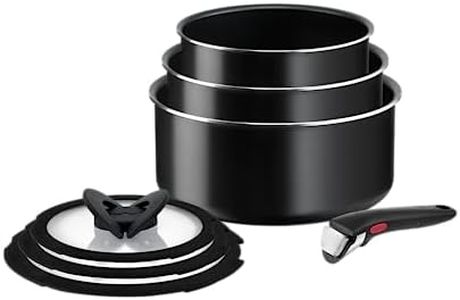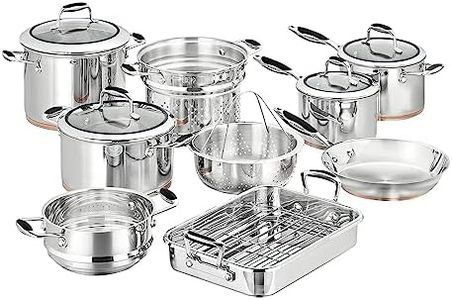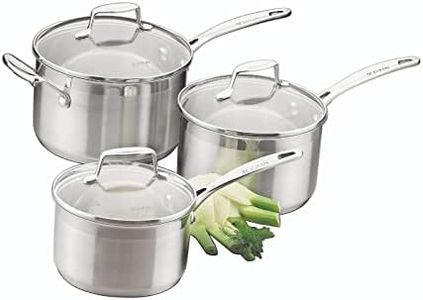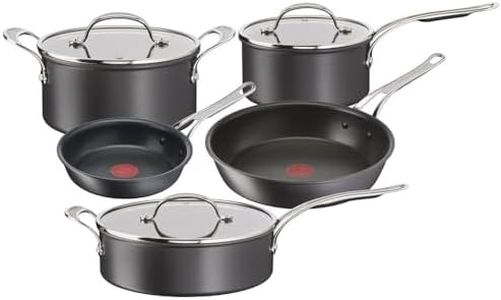We Use CookiesWe use cookies to enhance the security, performance,
functionality and for analytical and promotional activities. By continuing to browse this site you
are agreeing to our privacy policy
10 Best Saucepan Sets
From leading brands and best sellers available on the web.Buying Guide for the Best Saucepan Sets
Choosing the right saucepan set can make your cooking experience much more enjoyable and efficient. It's important to consider what you'll be using them for—whether that's boiling pasta, making sauces, or preparing daily meals. A good saucepan set should match your cooking habits, be comfortable to use, and be durable enough to last many years. When picking a set, focus on the material, size, coating, handles, and compatibility with your cooktop. Understanding these key specifications will help you select a set that's best for your kitchen.MaterialThe material of a saucepan affects how well it heats up and how durable it is. Common materials are stainless steel, aluminum, copper, and nonstick surfaces. Stainless steel is tough and resists rusting, aluminum heats up quickly and distributes heat evenly, and copper offers the best heat control but usually comes with a higher price. Nonstick options are great for easy cleaning but can be less durable over time. If you do a lot of simmering and sauce-making, materials that distribute heat evenly—like aluminum or copper—are a good choice, while stainless steel is great for everyday durability.
Size and Number of SaucepansSaucepan sets usually come in sets of two to six, each with different capacities measured in liters or quarts. Smaller saucepans (around 1-2 quarts) are best for tasks like melting butter or heating sauces, while larger ones (3 quarts and up) work well for soups, stews, or pasta. Think about the number of people you cook for and the recipes you make most often. A good starter set might include at least three sizes—a small, medium, and large—to cover a variety of needs.
Coating and Interior FinishThe interior finish or coating of a saucepan affects how food interacts with the pan and how easy it is to clean. Nonstick coatings prevent food from sticking and are easy to wash, which is helpful for recipes with sticky ingredients. Stainless steel interiors are great for browning foods but sometimes require more careful cleaning. If you want low-maintenance cooking and cleanup, a nonstick interior might be right for you, while stainless steel offers durability and versatility for a wider range of recipes.
Handles and LidsHandles should be comfortable to grip, stay cool during cooking, and be securely attached. Lids can be made of glass, which lets you check on your food without lifting the lid, or metal, which sometimes makes for a tighter seal. Some handles are oven-safe, which adds more versatility. Consider whether you often move pans from stove to oven or like the convenience of seeing your food as it cooks. The right handle and lid style can make daily use much easier and safer.
Cooktop CompatibilityNot all saucepans work on every type of stove. If you have an induction cooktop, make sure your pans are induction-compatible—typically they need to have a magnetic base. Traditional gas and electric stoves are more flexible, but if your set is compatible with all types, it's more versatile. Always check the packaging or the base of the pan to ensure it suits your stove, which prevents performance issues and ensures your set will work in any kitchen.
Ease of CleaningSome saucepans are dishwasher-safe, while others need to be washed by hand to preserve the finish or coating. Nonstick and some stainless steel models are usually easier to clean. If you cook frequently and want to save time on cleanup, check for dishwasher-safe sets or those with easy-release surfaces. If you don't mind hand washing and are careful about maintenance, more options will be available to you.
